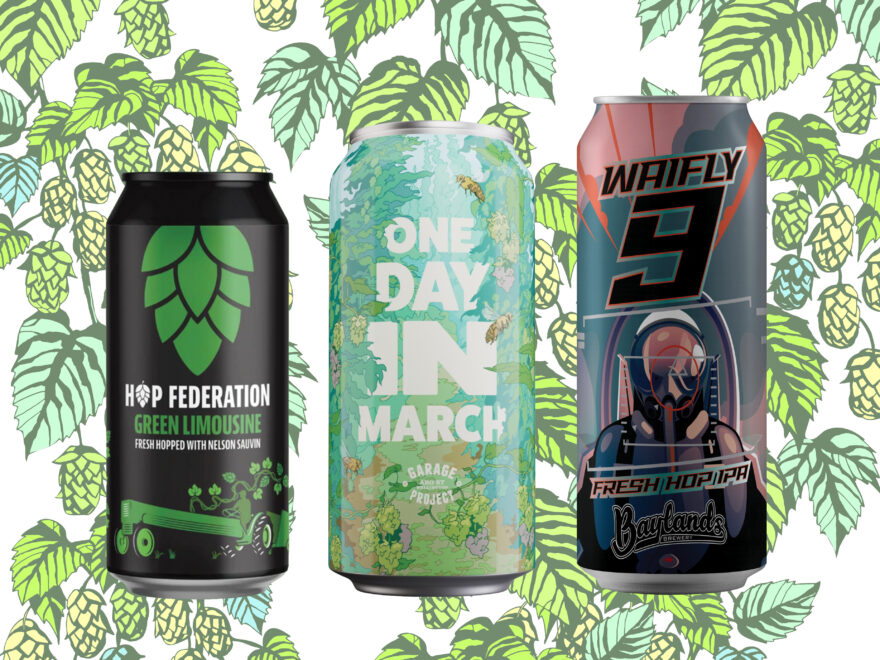Did you know grapes and hops are harvested at roughly the same time – in early autumn?
We don’t see any evidence of the grape harvest until much later in the year when the season’s vintage is released – but with hops, “harvest” beers are available within a few weeks. Which means around now.
You’ll see a lot of these beers labelled as “fresh hop” beers – it’s a slightly confusing term especially as some breweries market “fresh” beer year-round (but that’s another story for another day). In the case of the hop harvest, it means fresh off the bine (as opposed to a vine). Other terms are “green” hops or “whole cone” hops.
While beer is a year-round product, hops are harvested once a year, from late February to early April depending on the variety. The bulk are dried, processed into pellets and sealed in foil to be used throughout the coming year.
A small percentage, however, are kept in their unprocessed state and these bullet-shaped flavour enhancers give your beer a unique taste that you can only get at harvest time.
A beer made with fresh hops is so different to one made with hops pellets – there’s an oily resinous quality to the mouthfeel and the aroma has a fresh-from-the-garden pungency. It’s not dissimilar to the difference between dried and fresh herbs.
Another way of thinking about the flavour is that you get the herbaceous, more organic qualities that are often stripped away by processing. If you’ve ever had mint tea made with fresh mint from the garden versus dried mint you’ll know what I mean.
The analogy with herbs doesn’t stop here. Hops are full of essential oils, the most dominant being myrcene which is found in a range of herbs including thyme, bay leaf, parsley and that another well-known “herb” that is not yet legal to consume here. Other essential oils in hops – and there are around 13 – include geraniol and linalool, which are found in coriander. And there’s citronellol, which is found in citrus and gives hoppy beer one of its key aroma components. Other oils are similar to those found in pine, geranium, rose, passionfruit, guava and blackcurrant.
The trick for brewers is to draw these volatile flavours and aromas out of the fresh hops before they start to fade and end up tasting like day-old cut grass.
So look out for these beers from mid-to-late March through until April and get a dose of the juicy, resinous, herbal and lush qualities of New Zealand hops at their freshest. Some of the most reliable to try include Garage Project One Day In March, Hop Federation Green Limousine, and Baylands Waifly.
Michael Donaldson
hoppiness.co.nz

